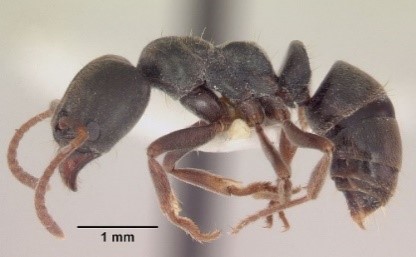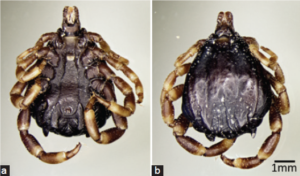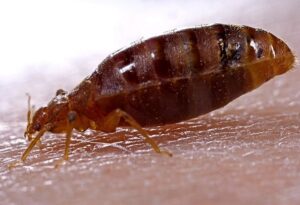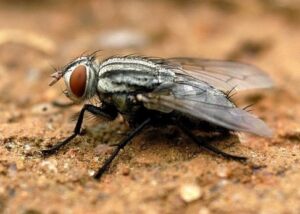Samsum Ant
General Description
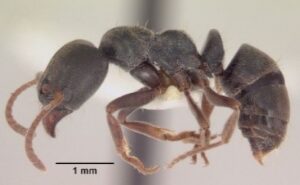 |
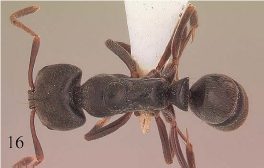 |
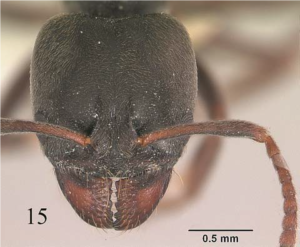 |
- Esposito, www.antweb.org
- Body length of workers 4–6 mm, head broader than mesosoma (middle body), with convex sides and emarginated posterior margin.
- Gaster ending with a powerful sting. Dark brown to blackish brown.
- Petiole is a high and thick node with a straight anterior surface and a convex posterior surface.
- Gaster ending with a powerful sting.
- Eyes are relatively large.
- All body surfaces covered with fine and dense pubescence.
Life Cycle and Common Characteristics
- Samsum ant colonies are established by reproducing winged alates or reproductive. Males and female ants emerge from the nest via newly constructed flight holes.
- The swarming takes place during humid weather, particularly after rain.
- Males die after mating, and the inseminated queens seek to find new colonies.
- Samsum ants feed on seeds and insect prey during the rainy season, and their diet consists exclusively of seeds during the three months rainy season. In dry tropical regions, foragers react to the absence of seeds in the rainy season by adopting a 100% animal diet.
- New colonies form rapidly and alate queens are probably attracted to artificial lights.
- Humid soil conditions are needed for nest building. The irrigation of roadside plantations, gardens, and parks seems especially conducive to the spread of this species.
Damages and Economic & Medical Implications
- Samsum ants are aggressive ants with a painful sting. They disturb people resting on carpets and floor cushions.
- Samsum ants are now spreading rapidly into most human settlements, and are found along all major roadside developments, picnic areas, parks, oases, plantations, and urban areas.
- In UAE, they are considered to constitute a public health hazard owing to their painful sting which has been known to cause cases of anaphylactic shock that lead to the death of some persons. Since 1987 in Al Ain city, over 50 cases of human allergic reactions and two deaths due to stings from samsum ants.
- The generalized symptoms associated with hypersensitivity to Samsum venom are urticaria, edema, wheezing and shortness of breath, and laryngeal edema.
- Samsum ants are also scavengers feeding on food refuse and arthropods.
- They also raid beehives and destroy honey bees.

